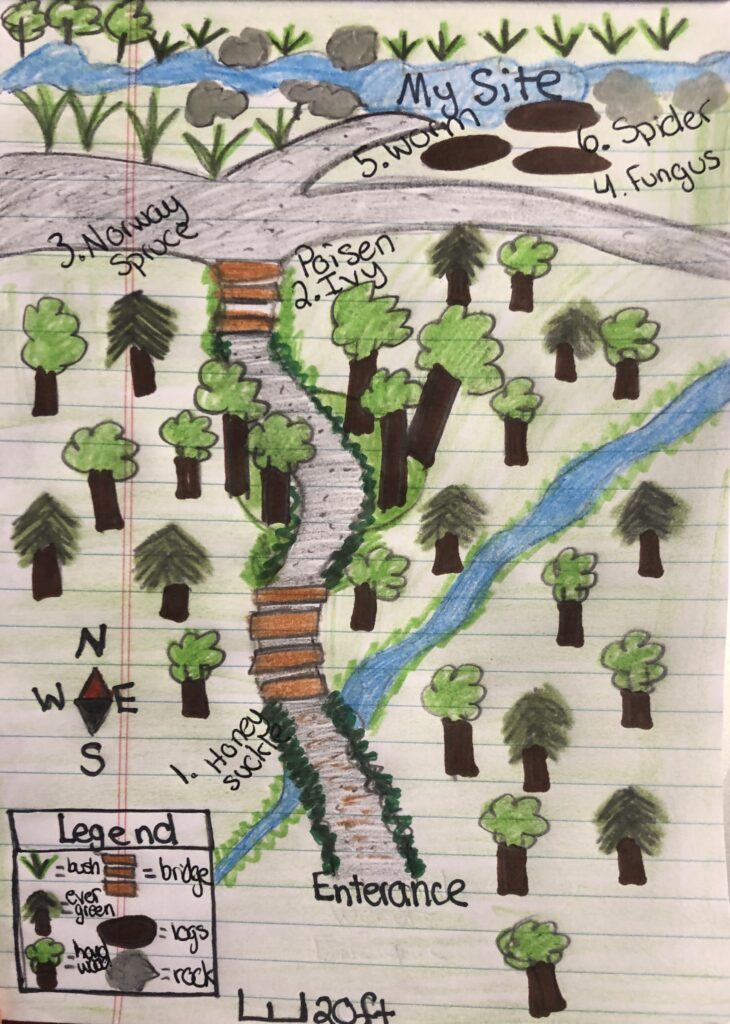
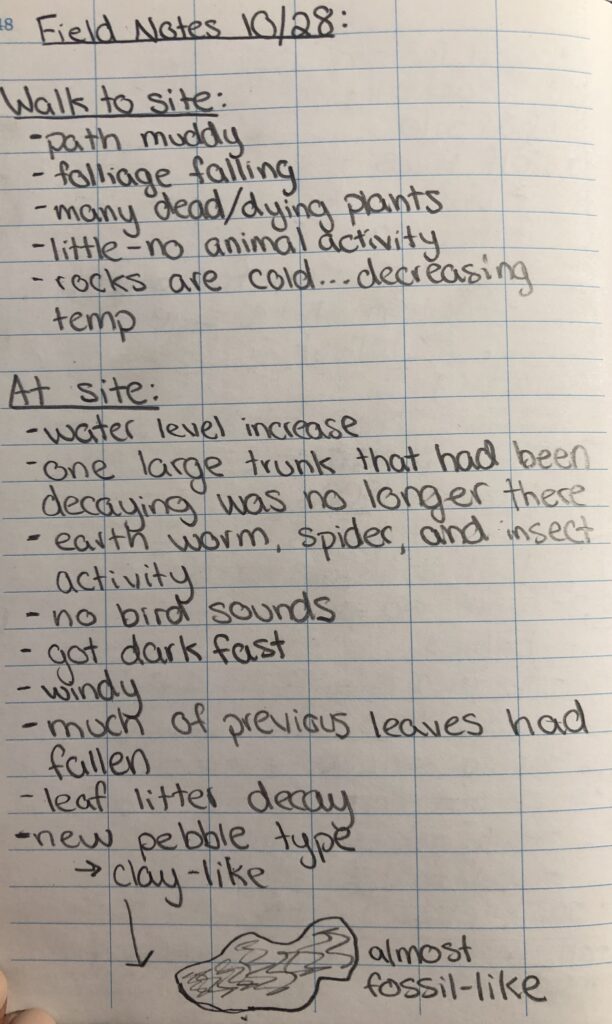
Honeysuckle: Plantae, Tracheophytes, Angiosperms, Eudicots, Asterids, Dipsacales, Caprifoliaceae, Caprifolioideae, Lonicera L.
Poison Ivy: Plantae, Tracheophytes, Angiosperms, Eudicots, Rosids, Sapindales, Anacardiaceae, Toxicodendron, T. radicans
Norway Spruce: Plantae, Tracheophytes, Pinophyta, Pinopsida, Pinales, Pinaceae, Picea, P. abies
Mushroom: Fungi, Basidiomycota
Earth worm: Animalia, Annelida, Clitellata, Opisthopora, Lumbricidae, Lumbricus, L. terrestris
Daddy long legs: Animalia, Arthropoda, Arachnida, Araneae, Pholcidae, Pholcus, P. phalangioides
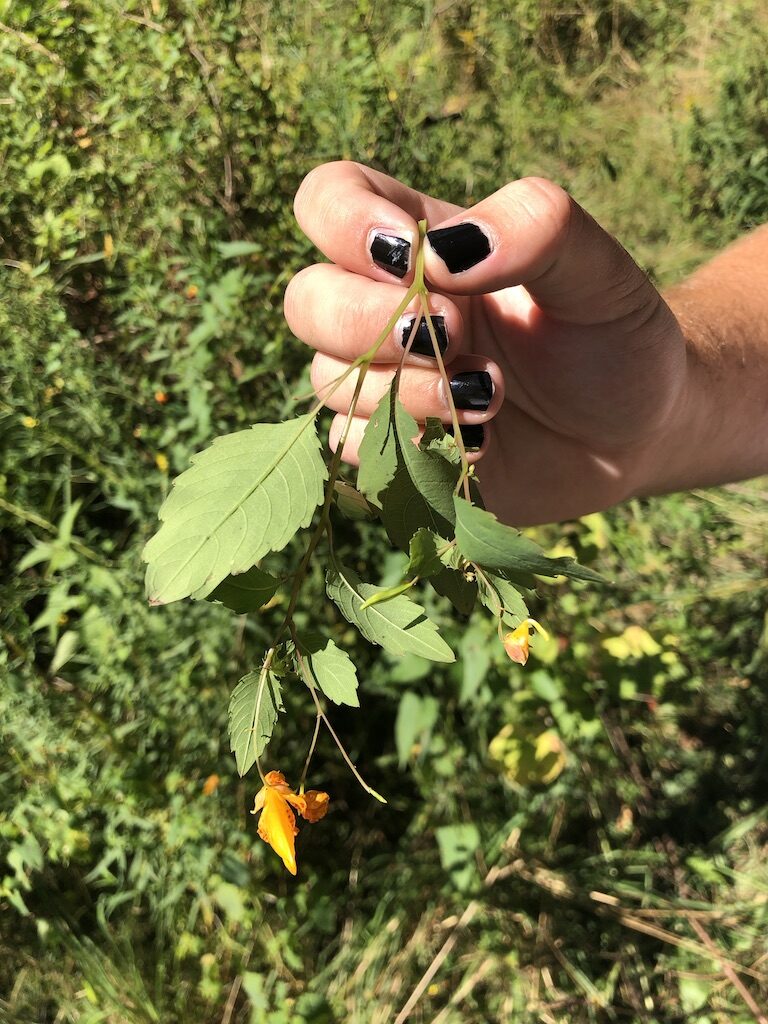
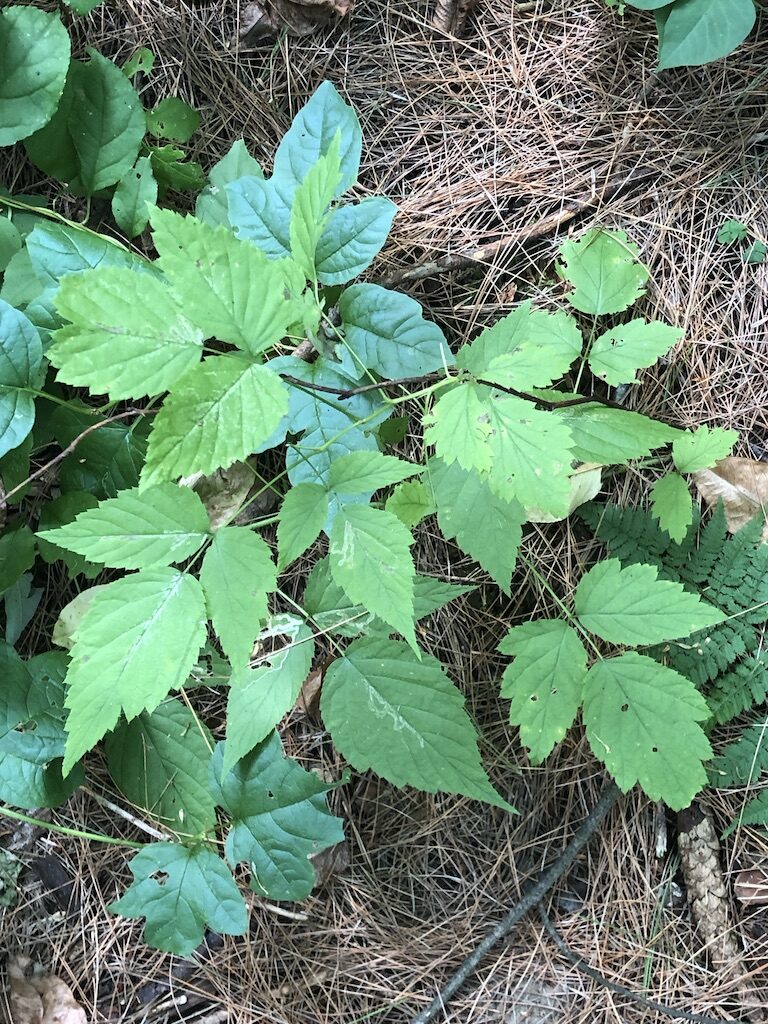

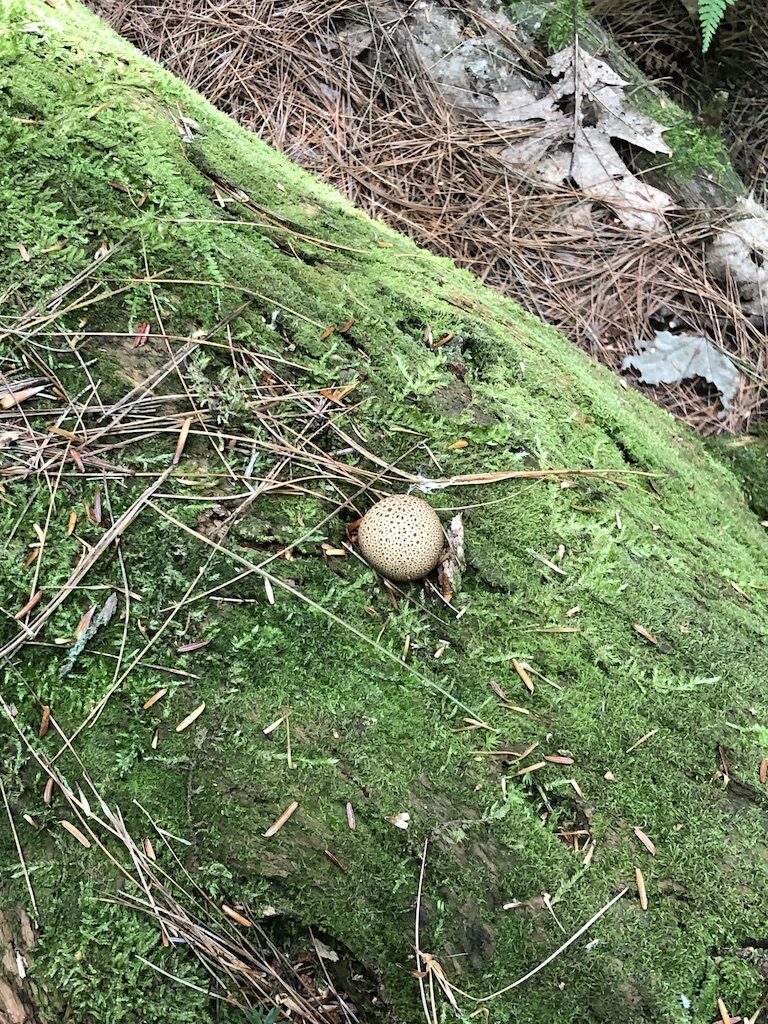
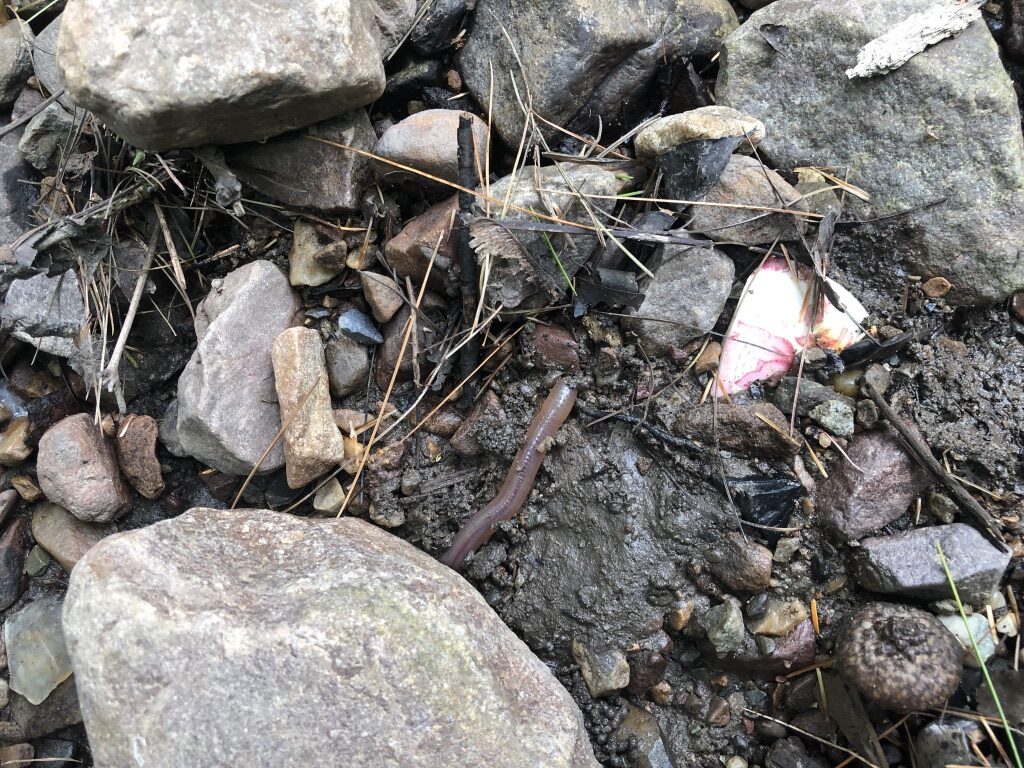
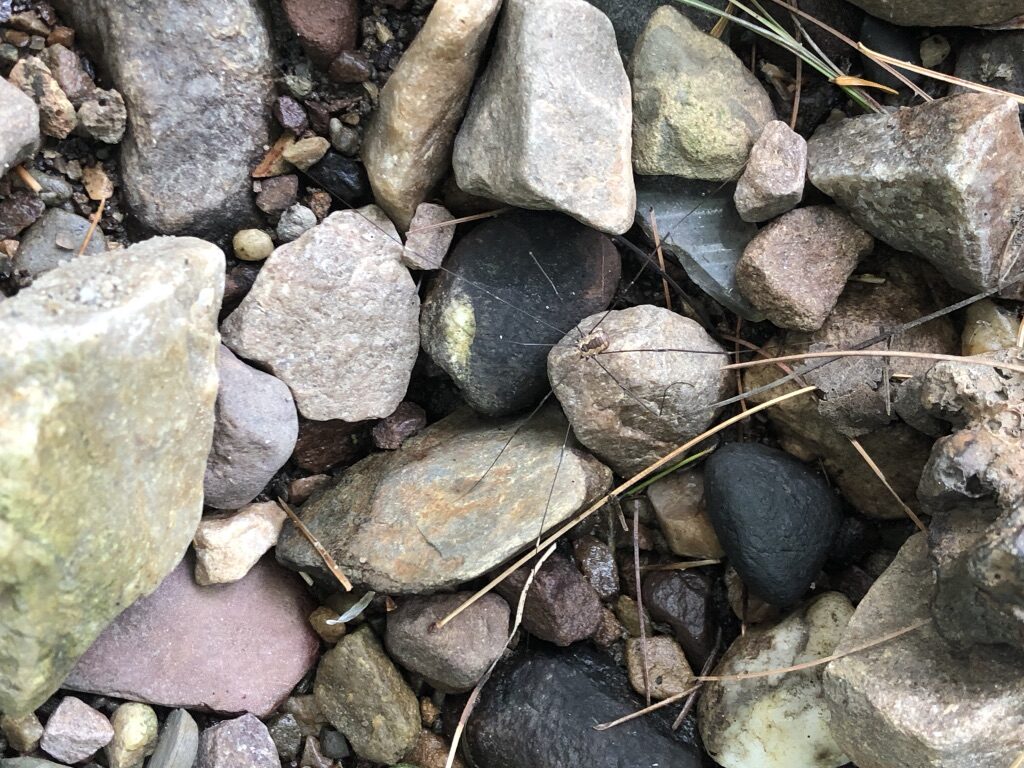
On my most recent visit to my site, the cold hand of fall showed its true colors. The beautiful foliage I had experienced last time was replaced with bare branches and decaying leaf-litter. The walk to my site was cold, dry, and quiet, as signs of life were no where to be found. While the trees were empty and the forest appeared unoccupied, a closer look at the grounds of the trails showed life I would have never looked for. When I had arrived at my spot, I noticed that the water level had risen quite drastically since my last visit. I correlated this to the large amounts of rainfall Burlington had experienced the past few weeks. The trees hanging over the water were bare and looked almost ghost-like. The fallen leaves were flowing down the stream and accumulated around a large log blocking the path of the water. As I watched this process up-close, I noticed two tiny friends hanging on the rocks and in the soil. I identified an earth worm and a daddy long legs. These two small creatures were preparing for the colder weather and were some of the only life I saw while visiting this first of November. I also photographed some plants, such as honeysuckle, poison ivy, and a Norway spruce branch. The honeysuckle and poison ivy are holding on to their last legs, as they will soon die with the coming winter. However, the spruce branch is a sign of everlasting life. This evergreen tree will continue to be and stay green as the new season starts. I also found a mushroom, which I photographed because it showed determination. This fungus was using the resources of a decaying log to survive. This fungus was prevalent because it shows the soil is slowly changing. With the large amount of rain recently, the soil is moist and cold from the dwindling daylight. The map I drew is by no means professional work, but it allowed me to better understand the area from a larger perspective. While it is beneficial to view the area up-close, creating an areal view of my site allows for a more general idea of location and perspective.